
Dating back 11,500 years, Göbekli Tepe in southern Turkey – and a number of lesser-known sites in the Fertile Crescent – are rewriting the early history of civilization.
On a yellow, grass-covered hill, 12 miles northeast of Şanliurfa (aka Urfa; itself an ancient city where the Prophet Abraham hung out) lies a sprawling ruins complex that predates the Old Testament by millennia. The labyrinthine site, only 5% of which has been properly excavated, is famous for its “monumental round-oval and rectangular megalithic structures erected by hunter-gatherers in the Pre-Pottery Neolithic age between 9,600 and 8,200 BCE”, according to its UNESCO World Heritage Site listing. “Distinctive T-shaped pillars are carved with images of wild animals, providing insight into the way of life and beliefs of people living in Upper Mesopotamia about 11,500 years ago.”
Architectural and artistic marvels
Section Type: standardWidthImageS
This aerial view shows the different circular and rectangular buildings within the main excavation area. (Photo: German Archaeological Institute, photo E. Kücük. The archaeological site of Göbekli Tepe - main excavation area, CC BY 4.0)
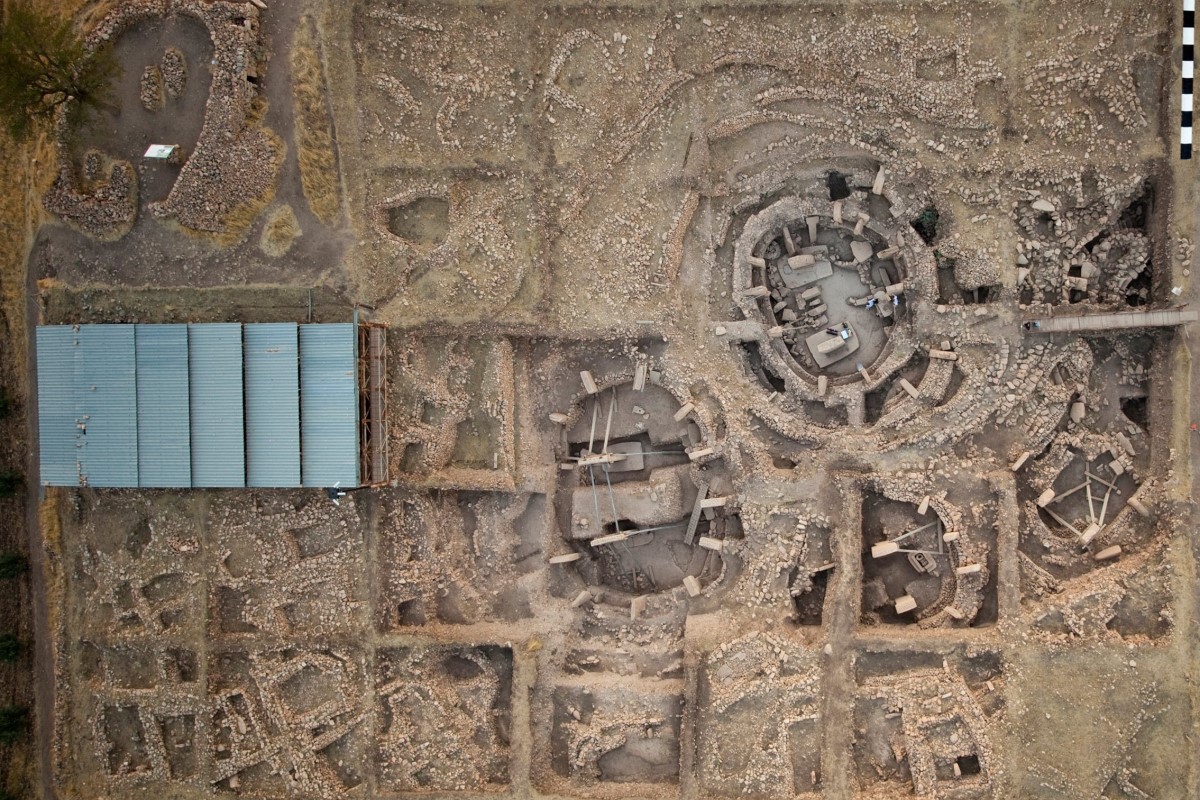
Of the eight major buildings excavated so far, four are round in shape and the others are more rectangular. The oldest four predate the discovery of the corner (take a moment to digest that!) and were built between 9,600 and 8,800 BC. They all feature the T-shaped pillars described above (once upon a time the Ts would have supported roof structures). The four more recent buildings were all built in the 9th millennium BC – Göbekli Tepe was not used after 8,000 BC.
As Oliver Dietrich, an archeologist who’s been working on the site since 2005, writes, the T-shaped pillars are all adorned with reliefs: “The most common reliefs on the pillars show animals. Most interestingly, every building has a clearly dominating species. For Building A it’s snakes, for Building B foxes, for Building C boar, and for Building D birds. The dominant animal could be connected to certain groups of people, in the sense of emblematic, or totemic symbols related to the identities of the builders.”
Section Type: standardWidthImageS
Animal carvings depicting a boar (left) and ducks (right).
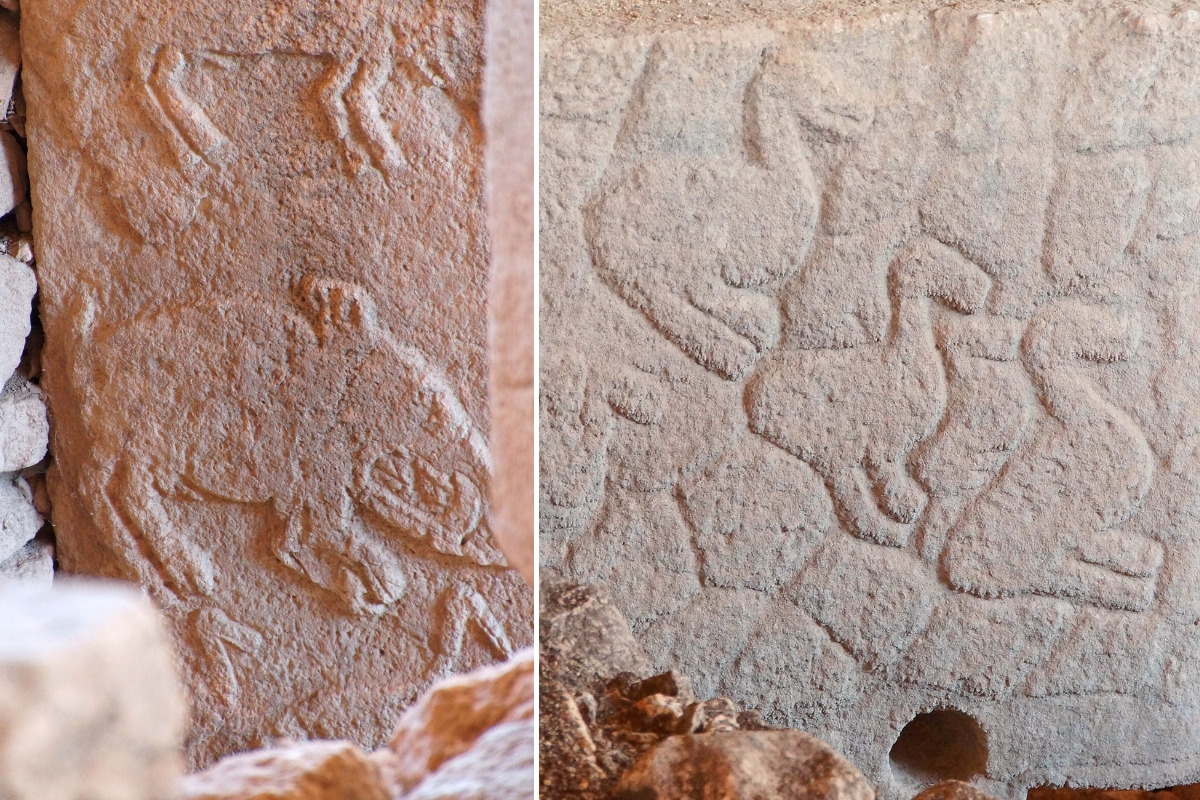
Dietrich, who has put together a fantastic photo tour of Göbekli Tepe, also describes the many sculptures that have been found at the site: “Some show humans; particularly remarkable are broken off sculpture heads frequently found next to pillars. Sculptures also depict animals, most frequent are wildcats and boar. Some of these sculptures were freestanding, others were part of building components.”
Why haven’t I heard of it?
The UNESCO listing and the opening of a modern visitors’ center (both in 2018) have turned Göbekli Tepe into a bona fide tourist destination. But, when you consider its massive archeological importance, it remains curiously unknown and under-visited. Attracting 850,000 visitors in 2022 was a great achievement for Göbekli Tepe, but it doesn’t come close to the 14 million people who visit the pyramids of Giza every year. Especially when you consider that the modern city of Şanliurfa – itself more than 2,000 years old – is a captivating architectural gem.
Section Type: standardWidthImageS
A roof was built over the site for extra protection, along with a walkway for visitors to view the site.
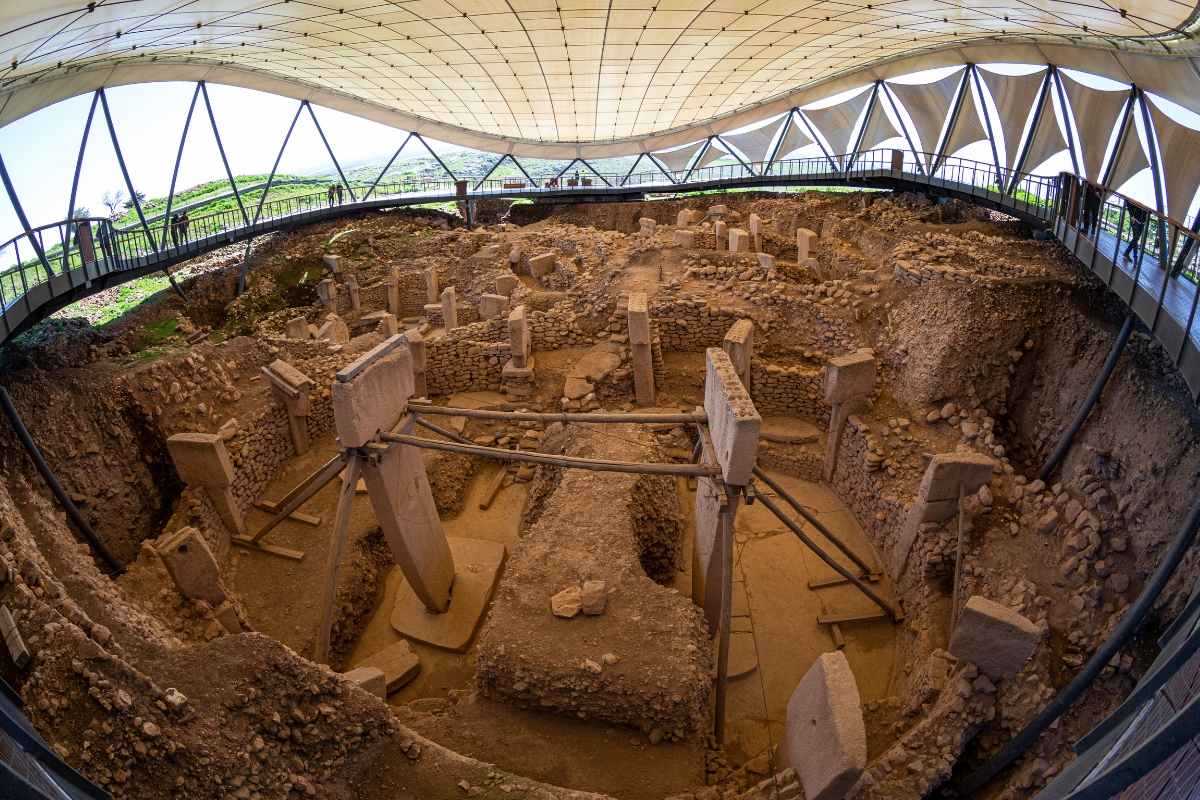
Part of the reason Göbekli Tepe remains relatively unknown is that it was covered by soil till very recently. Scientists first became aware of Göbekli Tepe’s (the name means “Potbelly Hill” in English) existence in the 1960s, but it was only in 1995 that excavation began under the watchful eye of the legendary German archeologist Klaus Schmidt.
The Fertile Crescent
Today, Southern Anatolia is arid and crammed with farmlands, but in Göbekli Tepe’s heyday, it would have looked very, very different. As Schmidt told Smithsonian Magazine before his untimely death in 2014: “This area was like a paradise.” As Smithsonian’s Andrew Curry explains, Göbekli Tepe “sits at the northern edge of the Fertile Crescent—an arc of mild climate and arable land from the Persian Gulf to present-day Lebanon, Israel, Jordan, and Egypt.” After the end of the last Ice Age, the region received more rainfall than it does today. “Prehistoric people would have gazed upon herds of gazelle and other wild animals; gently flowing rivers, which attracted migrating geese and ducks; fruit and nut trees; and rippling fields of wild barley and wild wheat varieties such as emmer and einkorn.”
Why is Göbekli Tepe so important?
The short answer: Because it’s so old, so huge, and so advanced. But the more one digs (pun intended), the more fascinating Göbekli Tepe becomes.
As this article from The Art Newspaper explains, “Göbekli Tepe is now considered part of a constellation of contemporaneous settlements that extends over 100km and includes Karahan Tepe and at least 11 other unexcavated sites.” Karahan Tepe, located about 20 miles to the east of Göbekli Tepe, “includes homes within a vast ritualistic complex that demonstrates that hunter-gatherers built permanent settlements long before the advent of agriculture 10,000 years ago.”
Section Type: standardWidthImageS
Karahan Tepe excavated site.
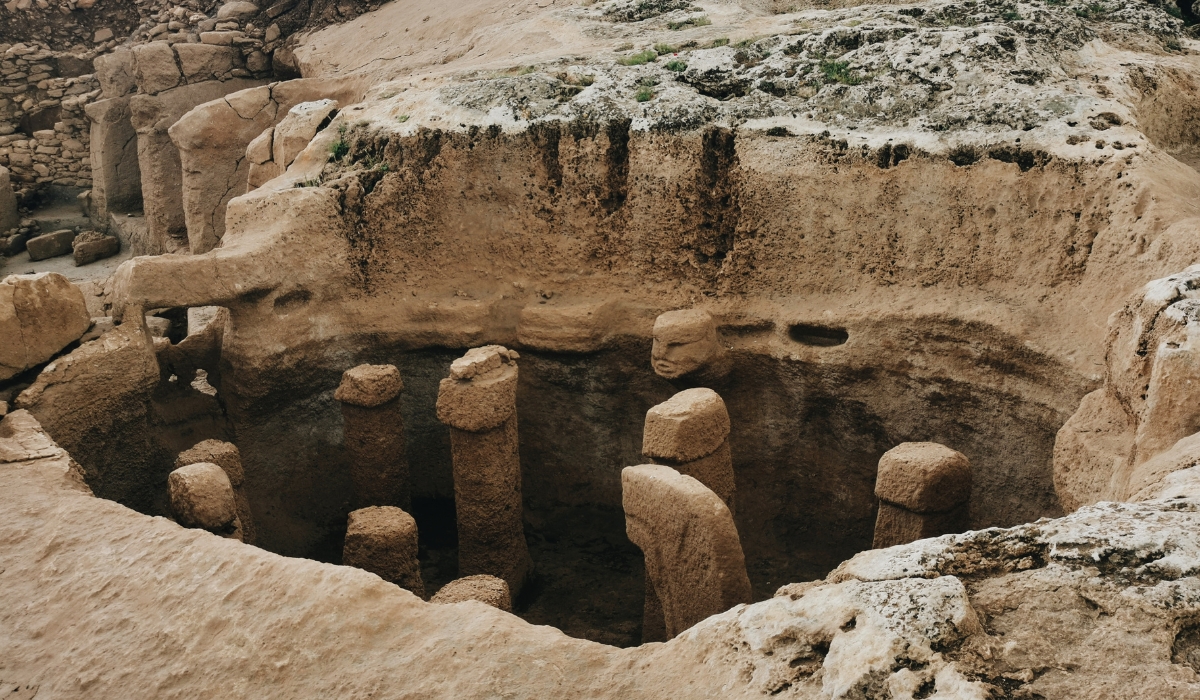
Sites across the Fertile Crescent are helping to change our understanding of the Neolithic Revolution, aka the Agricultural Revolution. Before the excavation of sites like Karahan Tepe and Tell Abu Hureyra (a small village located along the Euphrates River in modern Syria that was inhabited from roughly 11,500 to 7,000 BC) it was thought that the development of farming and animal husbandry caused humans to build permanent settlements. Recent discoveries suggest that it was actually the other way around.
As Necmi Karul, an associate professor of prehistory at Istanbul University who is leading the dig at Karahan Tepe, explained at an event to mark its opening to the public: “Now we have a different view on history. Our findings change the perception, still seen in schoolbooks across the world, that settled life resulted from farming and animal husbandry. This shows that it begins when humans were still hunter-gatherers and that agriculture is not a cause, but the effect, of settled life.”
Busting the myths
Section Type: backgroundOnly
As Schmidt began to excavate Göbekli Tepe, and the sheer enormity of the site became apparent, he made tentative hypotheses about what the vast complex might have been used for and how it could alter our understanding of human history. Some of these hypotheses have been latched onto by the media (and the Turkish government!) and repeated as fact. Later excavations caused Schmidt and his successors to reevaluate many of these hypotheses – but some folks out there are determined to not let facts get in the way of a good headline. This article will bust three of the most common myths:
Myth 1: “Zero point in time”
Turkey’s official tourism site markets Göbekli Tepe as the “zero point in time” and the dawn of civilization as we know it. While it’s impossible to deny the power of this phrase as a tourism slogan it is, of course, a gross oversimplification. There’s no denying that Göbekli Tepe holds many secrets about early human history, and especially our transition from hunter-gatherers into farmers; however it’s still just one piece of the puzzle – albeit an utterly remarkable and irresistible one.
Myth 2: Göbekli Tepe is the “world’s first temple”
Because he uncovered no evidence that people actually lived in Göbekli Tepe, Schmidt put out the theory that it was the world’s first temple. He even published a book titled Göbekli Tepe: Le Premier Temple. As this excellent interview with Dr. Lee Clare (the man who replaced Schmidt as lead archeologist) explains, subsequent findings of graves and fireplaces (among other things) have shown that people definitely did live there. While Schmidt called the large oval and rectangular buildings temples, Clare prefers the more neutral term “special building”.
This doesn’t mean it’s not a vitally important site. As Dietrich explains: “Göbekli Tepe has produced the oldest yet known evidence for monumental architecture. The execution of large communal projects before the completion of the transition to agriculture has widely changed our understanding of early sedentary societies. The site is interpreted as a central place for meetings and feasts of different groups of people within the wider region. The imagery focuses on strong and dangerous animals, and seems to be connected to group identities. It’s likely that the buildings played an important role in reinforcing group cohesion through ritualistic behavior.”
Myth 3: Göbekli Tepe was deliberately buried by the people who built it
Section Type: standardWidthImageS
What an incredible discovery in the middle of such vast landscapes.
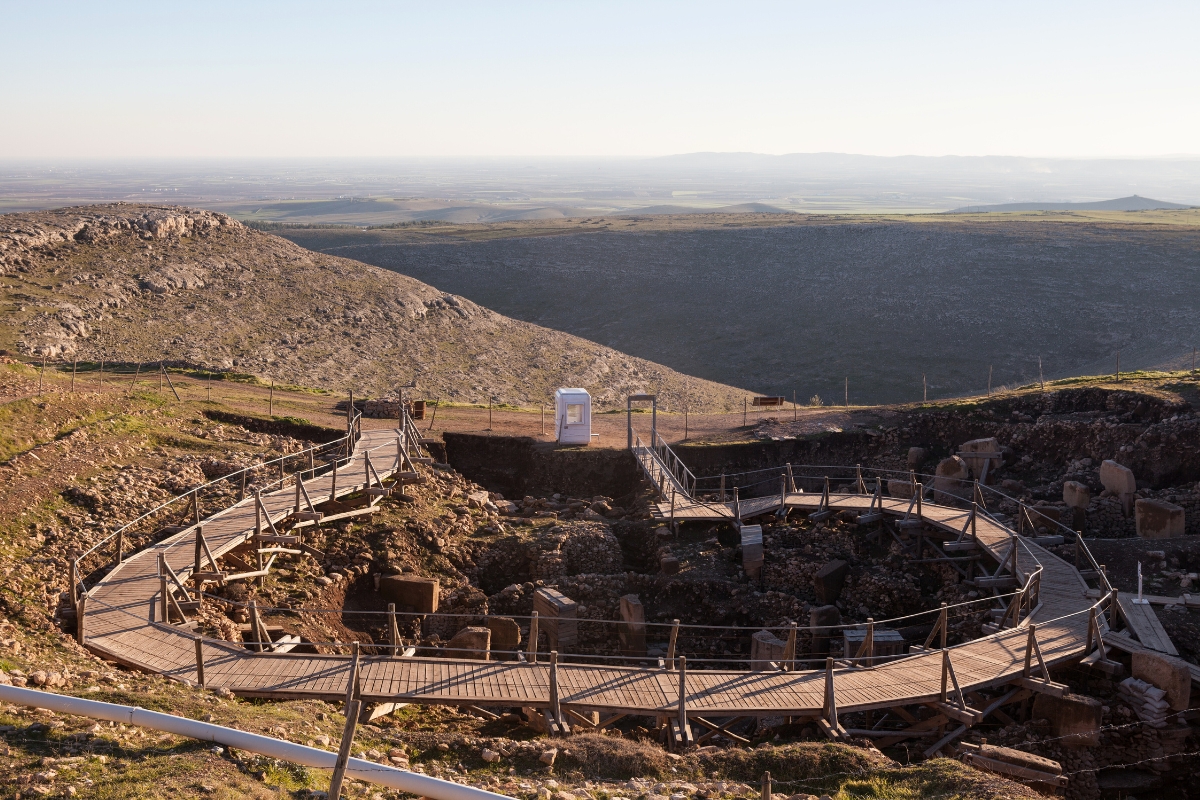
Section Type: backgroundOnly
As archeologist Matthew Sibson explains on his Ancient Architects YouTube channel, “another misconception repeated by many is that the circular enclosures were built and used and then the whole site was ritually and intentionally buried.” While there is evidence of this kind of behavior at Karahan Tepe, the reasons for Göbekli Tepe’s collapse appear to be far more prosaic: gravity. The site is built in a natural hollow, with the oldest, circular, buildings at the center and more recent constructions above them. Slope-slide was a real problem, especially when you consider that the region is still prone to massive earthquakes.
Watch the video
For a better understanding of what is and isn’t true about Göbekli Tepe and why it is so remarkably important, watch this hour-long interview with Dr. Lee Clare:
See it for yourself
Göbekli Tepe’s nomination as a UNESCO World Heritage Site in 2018, and the subsequent opening of Karahan Tepe to tourists, have shone a global spotlight on the Şanliurfa region for the first time in millennia. Numerous hotels catering to international tourists have sprung up in recent years, including some boutique properties housed in restored architectural gems.
Göbekli Tepe features a fantastic, modern visitors’ center (simply ignore the “zero point in time” claims) and is well set up for tourists. At the time of writing, Karahan Tepe had only rudimentary tourist infrastructure, but this merely adds to the thrill of visiting a real archeological dig. Both sites are best explored with a local expert guide – something which all SA Expeditions’ itineraries include as a matter of course.
The other key to understanding the region’s history is the excellent Şanliurfa Archaeological Museum which covers a broad arc of time spanning from the Neolithic era through to the Ottomans. The Neolithic halls, which showcase finds from Göbekli Tepe, Karahan Tepe, and other nearby Pre-Pottery Neolithic sites, are the undisputed highlights. We suggest visiting the museum before you visit the sites.
Section Type: standardWidthImageS
Stunning views atop Urfa Castle.
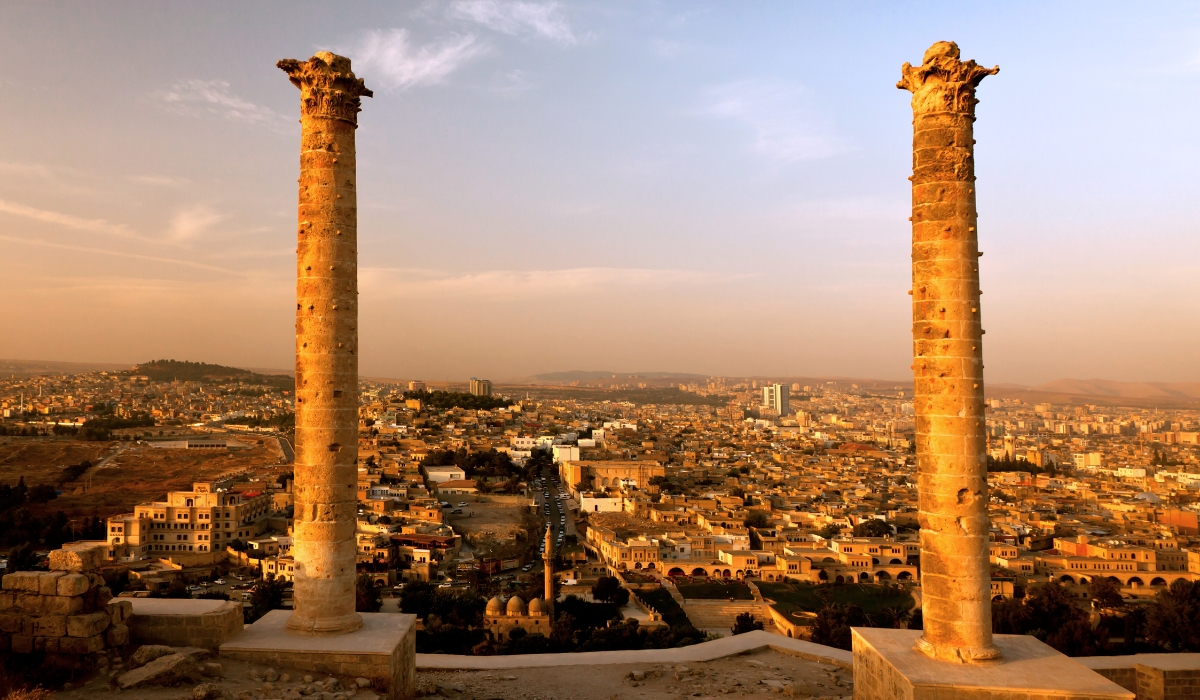
The attractions don’t end here. Şanliurfa, often referred to as the “City of Prophets” or “The City of Abraham”, is jam-packed with tourist attractions. At its heart lies the ancient fortress of Urfa Castle, standing proudly atop a hill with panoramic views of the surrounding landscape. The old city center, where labyrinthine alleys lead to bustling bazaars brimming with spices, textiles, and traditional crafts, is an attraction in its own right. And then there’s the Pool of Sacred Fish, believed to be the site where Prophet Abraham was cast into the fire by King Nimrod. Pilgrims also flock to the Cave of Abraham, a sacred site revered by Muslims, Christians, and Jews alike.
Section Type: cta
Unearth Turkey’s fascinating past with SA Expeditions. Check out our most popular Turkey itineraries. Then speak to one of our Destination Experts about turning your favorite tour into a Neolithic treasure hunt.


Copyright © 2025 SA Luxury Expeditions LLC, All rights reserved | 95 Third Street, 2nd floor, San Francisco, CA, 94103 | 415-549-8049
California Registered Seller of Travel - CST 2115890-50. Registration as a seller of travel does not constitute approval by the state of California.










